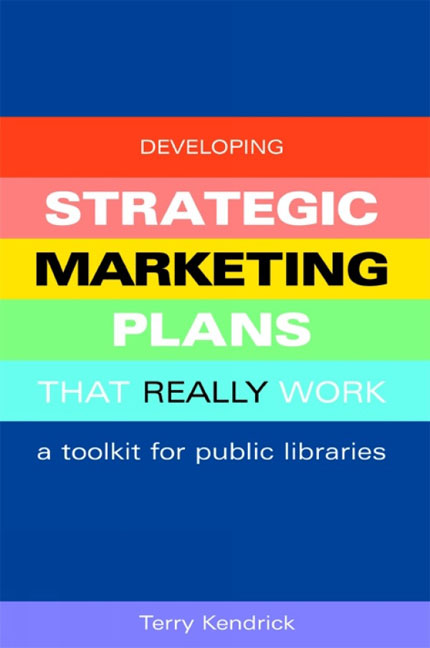Book contents
- Frontmatter
- Contents
- Acknowledgements
- Introduction
- 1 Strategic marketing planning for public libraries: an introduction
- 2 Ambition as the basis for marketing planning
- 3 Making sense of the market for public library services
- 4 Creating segment-specific value propositions for users and non-users
- 5 Priorities: making sound choices
- 6 Clear objectives and winning strategies
- 7 Attention-grabbing marketing communications
- 8 Implementation and quick progress
- Appendix Twenty fast-track templates
- Select bibliography
- Index
4 - Creating segment-specific value propositions for users and non-users
Published online by Cambridge University Press: 08 June 2018
- Frontmatter
- Contents
- Acknowledgements
- Introduction
- 1 Strategic marketing planning for public libraries: an introduction
- 2 Ambition as the basis for marketing planning
- 3 Making sense of the market for public library services
- 4 Creating segment-specific value propositions for users and non-users
- 5 Priorities: making sound choices
- 6 Clear objectives and winning strategies
- 7 Attention-grabbing marketing communications
- 8 Implementation and quick progress
- Appendix Twenty fast-track templates
- Select bibliography
- Index
Summary
By the end of this chapter you will be aware of the need to segment your library market and have tools and techniques to help you segment and create value propositions for a variety of user segments.
As noted in the previous chapter, not all library users are the same. This is obvious but not trivial. How should this diversity be reflected in developing service offerings? Marketing planning for public libraries should recognize that any basis for segmentation is not simply of user and non-users but also of a whole range of other stakeholders. These stakeholders include local and central government and library staff. Marketing planning should take account of all stakeholder groups and segment them in an appropriate way.
For over a century public librarians have grouped users and potential users that share similar wants and needs. Although the activity has not been termed segmentation, it is in fact good instinctive segmentation for marketing planning. Groupings have been based upon materials (fiction, non-fiction, audiovisual and others), age groups (children, teenagers and adults), usage (local history, music) and need (housebound, visually impaired). In addition there are often good links with various communities of interest such as women's groups, parent–teacher organizations, youth organizations and others. These are good examples of very basic, but also very useful, segmentations, recognizing that users in each of these categories may wish to access the whole range of library services but may have a very specific set of needs that they bring to the public library service.
Segmentation in public libraries should provide the practical basis for service development. It is the process of identifying groups of users and stakeholders who have similar needs and can be made distinct offers, or who can expect distinct service packages. If this grouping is based upon their area of work (e.g. business, voluntary sector), then this is better thought of as a market sector; if based upon a complex mix of factors relating to lifestyle, age and benefits sought, for example, this is a true segment
- Type
- Chapter
- Information
- Developing Strategic Marketing Plans That Really WorkA Toolkit for Public Libraries, pp. 68 - 82Publisher: FacetPrint publication year: 2006



